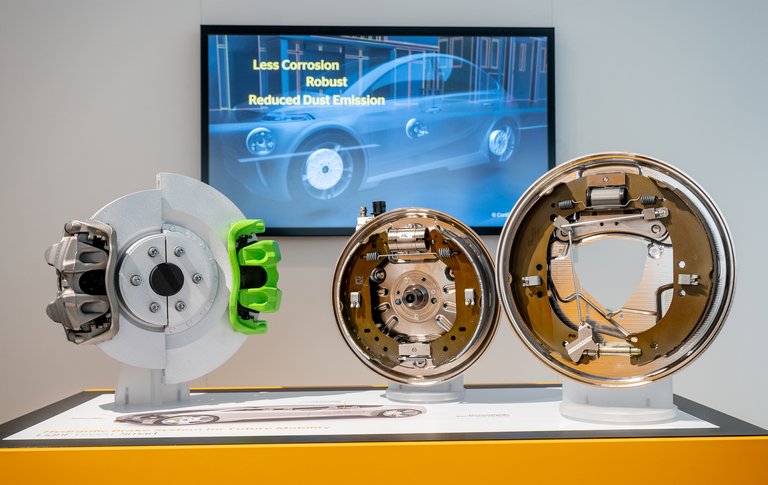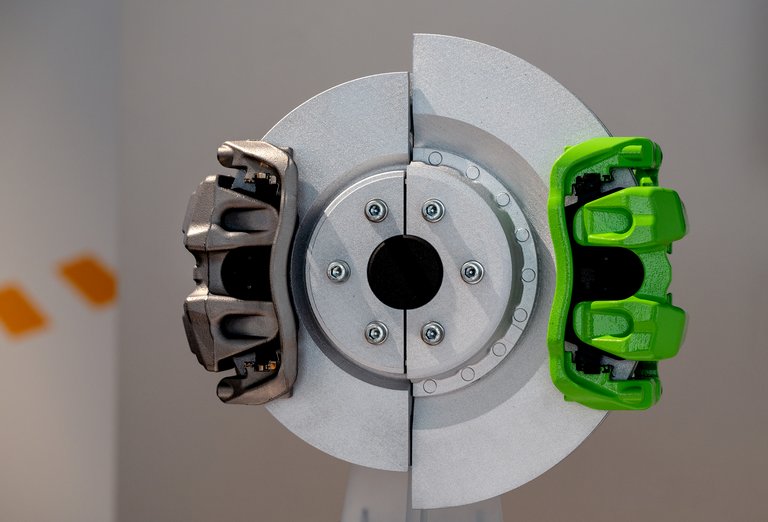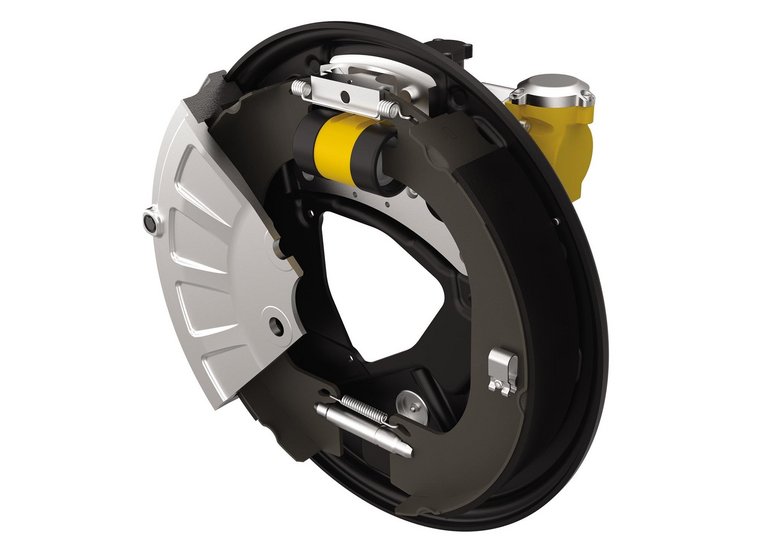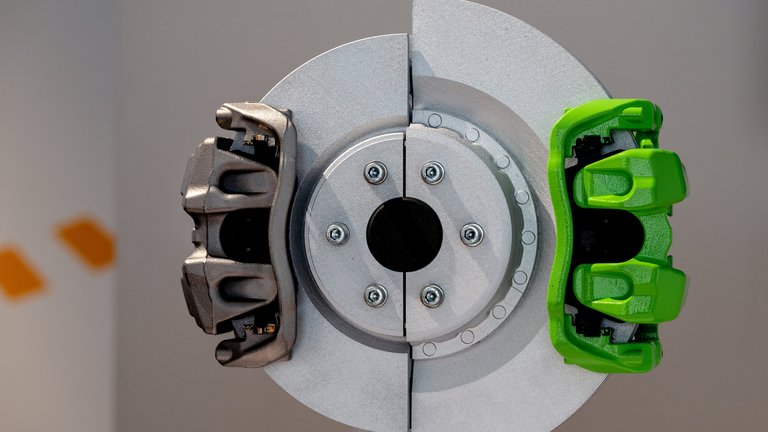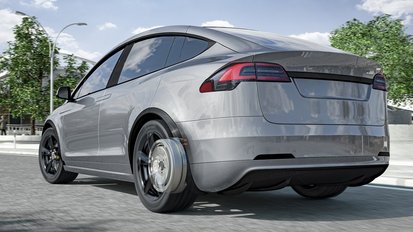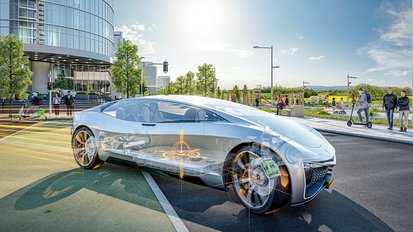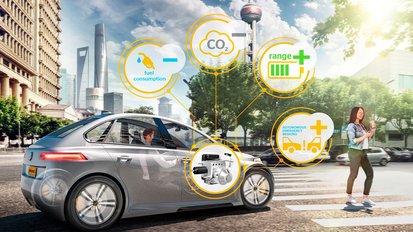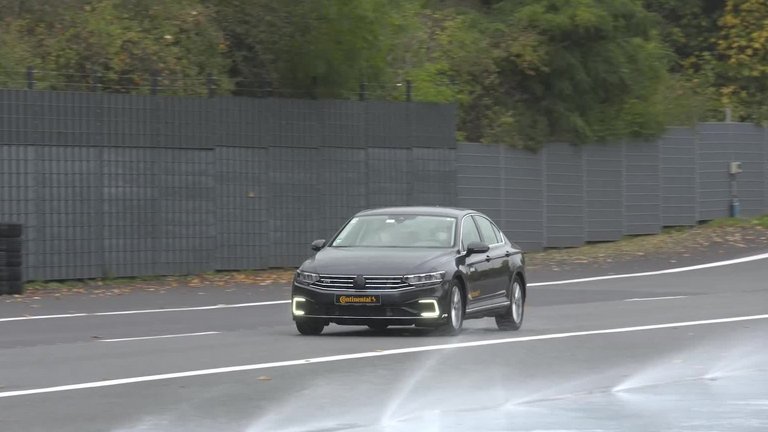Hydraulic Brake Systems for Future Mobility – Wheel Brakes Contribute to Sustainability
Whatever the architecture of the brake system of the future will look like –every car will continue to need wheel brakes. The need for deceleration, emergency stopping, stabilization, standstill management and fail-safe operation makes wheel brakes indispensable. However, on top of that, brakes have to contribute to lower CO2 and dust emissions. Electrification will also bring a revival of the drum brake. Brake calipers, on the other hand, will similarly be optimized for the specific boundary conditions of electrification and for specific types of vehicles. The braking hardware is as much on the move as software and architecture are.
Brake system architecture is changing
Automated Driving (AD) and electrification pose new challenges to the brakes – as does the need for greater sustainability and lower friction losses caused by residual drag. Hydraulics may become optional in the long run – depending on the strategy of individual vehicle manufacturers. Instead, electromechanical brake actuation offers greater freedom to define vehicle architecture. Both fundamental types of wheel brake, disc/caliper and drum brake, offer potential for future requirements and this potential can be harvested with either hydraulic or electromechanical actuation. Continental is developing wheel brake solutions for new vehicle architectures and new environmental requirements for brakes.
Electromechanical actuation
Wheel brakes actuated by electric motors facilitate improvement. Installed on the rear axle, for instance, they offer an ideal solution for regenerative braking, independent of brake pedal feel and hydraulic pressure modulation. Continental is developing electromechanical actuators for calipers and drum brakes alike: The electric caliper and electric drum brake. The “intelligence“ to control the electric actuation motor can be integrated into the wheel brake, which is part of a future trend towards brake system “disintegration” and distribution.
Green braking and sustainability – calipers
Dust generated through braking (disc/drum and brake pad/shoe abrasion) is another challenge for the automotive industry. In the future, the aim is to reduce the particulate matter (PM) emission of this type of dust in order to lower the overall vehicle particle emissions. For calipers, one of the current approaches is to apply a hard coating to the brake disc, which reduces abrasion. However, this solution is cost-intensive as the coating is expensive. Still, calipers are an attractive choice, particularly on the front axle (FA) and for vehicles with a greater mass. As discs with calipers dissipate heat very well owed to their open design, they are perfectly suited for delivering very high braking power to decelerate a vehicle with a lot of kinetic energy. This is reflected in Continental’s expertise in developing calipers for hard-coated discs, which reduce particle emissions from this brake type. In order to also reduce the residual friction of the brake shoes, which remain in contact to the disc after the braking action, a caliper design with a greater air gap between disc and pad is available, as well as a solution for active brake pad retraction.
Downsizing is another innovation path that Continental is pursuing with calipers. The potential for further downsizing is a result of electrification: In an electric vehicle equipped with a brake-by-wire system such as the MK C1 or the future MK C2, up to 80 percent of all deceleration events can be covered with regenerative braking during a normal driving style. Assuming that braking actions are consistently started with regenerative braking, this percentage can go up as high as 95 percent. In other words, in an electric vehicle with an optimized regenerative braking strategy, the wheel brakes are hardly ever used for deceleration. This change can be utilized to downsize the calipers, which saves wheel-sprung mass and contributes to vehicle efficiency. As infrequent use of a caliper can potentially cause issues due to brake disc corrosion and less aggressive brake pad surfaces, Continental is also preparing solutions for keeping a caliper fully operational despite longer downtimes.
Green braking and sustainability – Drum brakes
Once the wheel brake is no longer the workhorse of deceleration, it turns into a “fallback system” that is only needed in exceptional situations. When this happens, drum brakes can play to one of their particular strengths: As the drum brake is a system fully enclosed by a housing, the mechanics and brake surfaces inside are well protected against ambient influences such as rain and salt, which cause corrosion. As the brake shoes are also retracted from the drum surface by the force of a spring, residual drag is not an issue with the drum brake.
Yet, the drum brake has another trump card to offer: It causes hardly any particle emissions. Thanks to the closed design, brake dust accumulates within the brake and can be collected in a reservoir at the bottom of the brake drum. During brake service this reservoir is emptied by suction-cleaning. This level of brake dust reduction is hard to achieve with a caliper. With the EPB-Si, Continental is manufacturing and supplying a patented drum brake solution that fits the bill of sustainability and green braking especially well. It eliminates corrosion, reduces bake dust – and the electric parking brake functions are also integrated into the patented design. That is why it is installed in the VW ID.3 on the rear axle (RA). Considering this mix of system properties, the drum brake is an attractive choice, at least for the RA of electric vehicles. Depending on the vehicle segment, it is also an attractive option for the FA of vehicles with a lower mass.
Dry drum brakes
As the electrification of vehicles is making rapid progress, the mechanical part of brake actuation – the hydraulics – can be replaced with an electric actuation. The first solutions for “dry” braking are likely to be installed on the RA – where the drum brake is naturally at home. In fact, the drum brake is well suited to this approach because it offers a design advantage for electrification: Owed to their principle of operation, drum brakes require less actuation power, which results in small and light motor-gear-units inside the brake. (The drum’s rotation causes a self-enhancement effect by pressing the two linings against the drum.) Drum brakes with electromechanical actuation are therefore a particularly good match for efficient electrified mobility. Continental is addressing this requirement with developing the lightweight electro-mechanical Duo-Servo Drum Brake, a dry drum brake without hydraulics.
In this completely new type of duo-servo brake, sensors measure the effective brake moment, and the system’s high control rate ensures that exactly the requested force is applied by the compact electric actuator and gear unit inside the dry drum brakes – the braking force is thus perfectly balanced at both wheels. So electrification may well result in a comeback of the drum brake and is also likely to trigger the next step to dry braking.
Bottom line
When it comes to innovations for the future requirements of sustainability and green braking, both disc/caliper and drum brake offer specific potential for future braking systems. Depending on the vehicle class and car manufacturer strategy, both types of wheel brake will be needed. That is why Continental is proactively advancing both to offer the best trade-off between stopping performance, cost, sustainability, efficiency and particle reduction for each type of car. Wheel brake innovation is an indispensable part of any future brake system.

